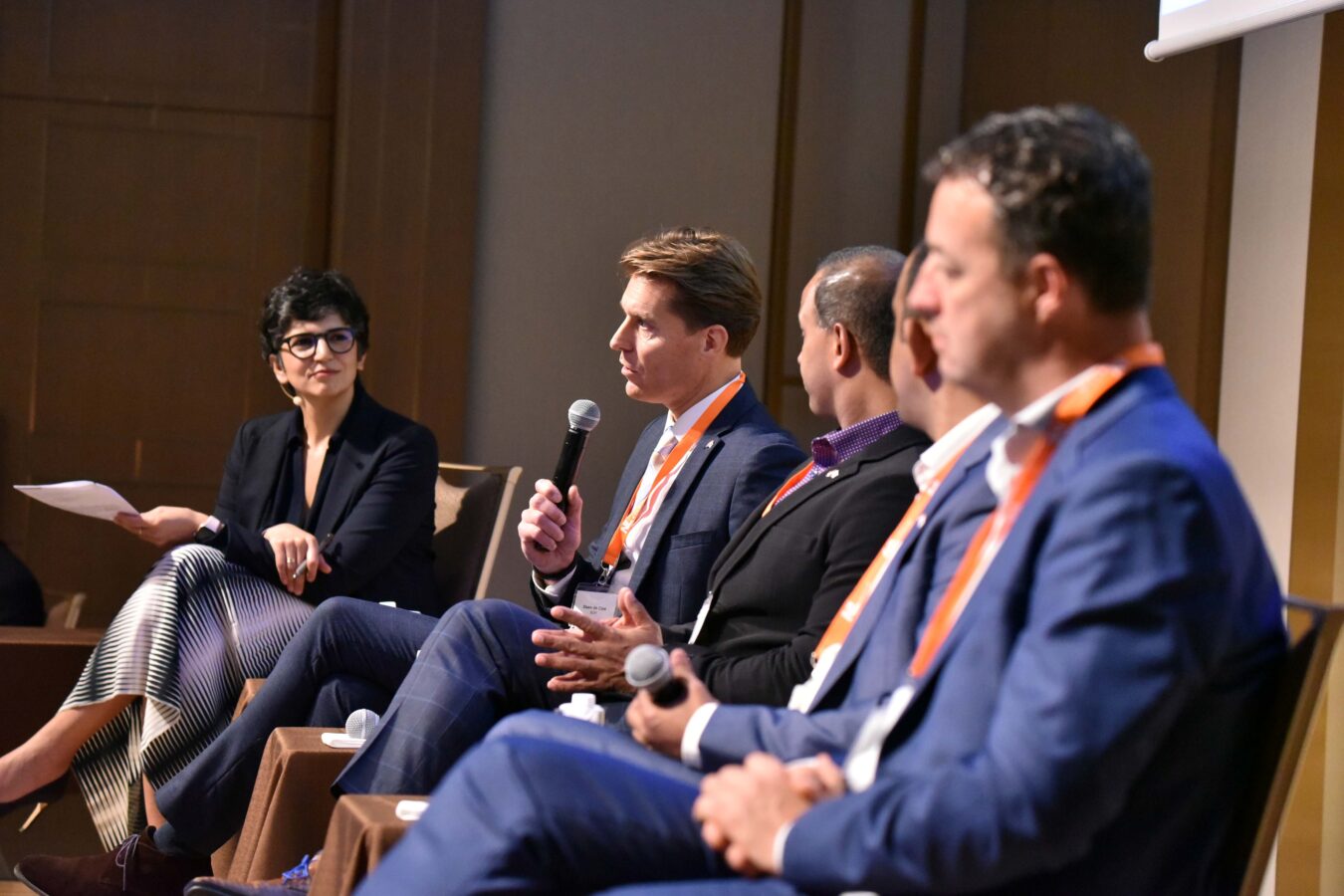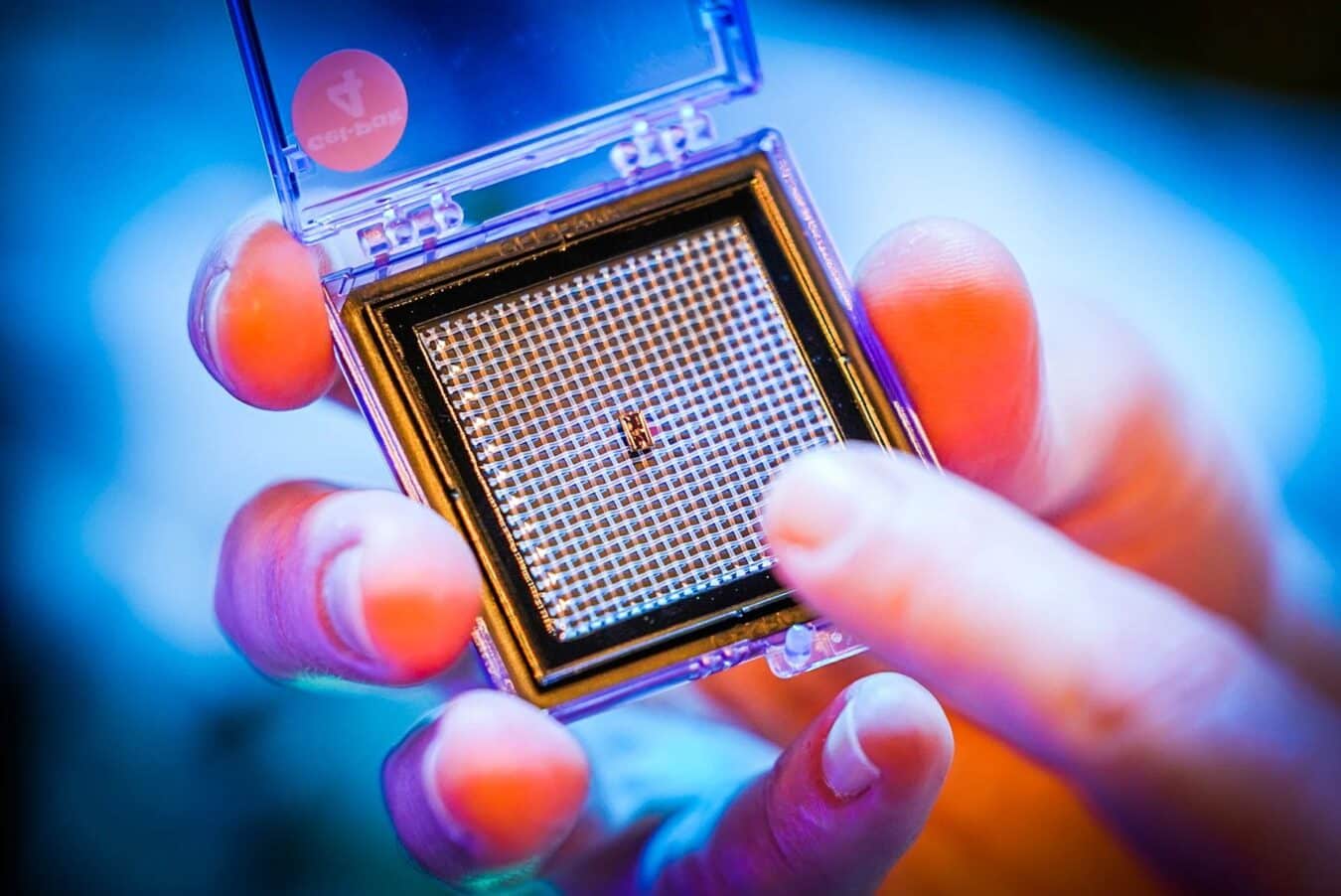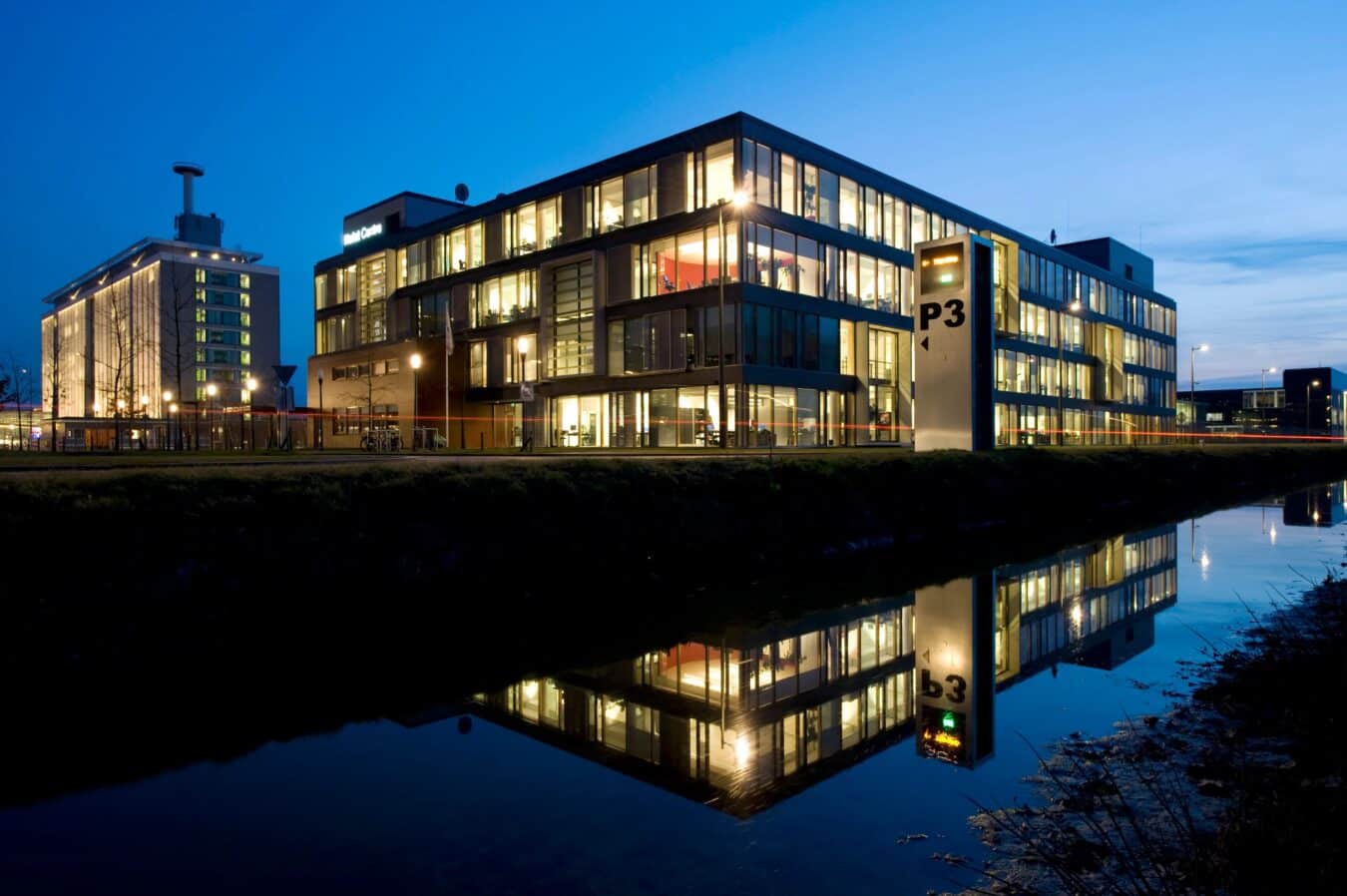Winning, together: how Brabant’s ecosystem accelerates innovation
4 min read
12 August 2025
Tackling today’s complex challenges – like climate change – calls for equally sophisticated, collaborative solutions. Helen Kardan of TNO, joined by Daan de Cloe (BOM), Ton van Mol (Holst Centre), Ashok Sridhar (TracXon), and Thiru Kanagasabapathi (Aikon Health) explore how Brabant’s ecosystem of talent and knowledge-sharing accelerates innovation.

What are open innovation ecosystems and how does Intellectual Property (IP) support collaboration in Brabant’s open innovation ecosystem?
Daan: “Open innovation is based on collaboration, trust and respect for each other. We can look at it through the lens of talent development. We all strive to hire the best talent, but it’s limited. In Brabant, we have government bodies, companies, research institutes, universities and schools all working together to educate and train talent to the level the industry needs. And as a collective sector, we do our best to then retain that talent. There’s no infighting; it’s more important to keep the talent within the ecosystem.”
Ton: “In our labs, if we collaborate with two or three companies, we always say to them that their background IP stays theirs; they don’t need to share it. But by joining forces, we can create innovations that we all have access to, at a lower cost, with less risk and a much higher chance of success.”
Thiru: “Open innovation has brought us together with research institutes, academic hospitals, and regional development hospitals. We are a spin-off from TNO, and we licence technologies from them, so that really helps us. We’re born from research that’s been conducted for over a decade at TNO. Now, in partnership with them and TracXon, we’re developing new IPs that could potentially strengthen our core value proposition.”
Ashok: “I’d compare the Brabant ecosystem to a nuclear reactor. A fission nuclear reactor starts with an atom that breaks up and multiplies continuously. In Brabant, this process began with Philips many years ago. It created spin-offs that have outgrown Philips, such as ASML and NXP. These companies in turn help to create new startups in the region, and so on. This kind of nuclear reaction keeps increasing the level of innovation.
“Brabant is also one of the best places for mission building. At TracXon, we need machines that currently do not exist. We have the blueprints and ideas, but we rely on machine builders in Brabant to produce them for us. So, the region is a complete ecosystem that enables us to go forward and hopefully grow.”
How can a development agency like BOM lend its support?
Daan: “We support a lot of companies in several ways. At events like Brabant Innovation Day – organised by the Province of Noord-Brabant – we play a connecting role, helping companies, large and small, engage with institutes and governments to uncover shared strengths. Innovation doesn’t happen in isolation; it thrives in open networks, and that’s what we help foster. By facilitating these connections, companies can more easily find the right partners and move forward faster. Other development agencies, like Brainport – which focuses specifically on Eindhoven – share this collaborative ethos and way of working.”
Thiru: “We’re a startup that benefits from the open innovation ecosystem in terms of the access it gives us to the network. We know we can’t spread our resources too thin, and that we need to focus on our strengths. So, it’s important to us to partner with organisations that excel in other areas of innovation. We’re eager to bring next-generation technology to our solutions, and that’s the reason we take part in gatherings like this: to identify and work with companies that can help us advance our products as far as possible.”
How do the industries in Japan and Brabant complement each other?
Ashok: “Japan is a powerhouse in innovative materials. There are companies here making strides in printer electronics using TracXon technologies. So, we keep coming back here to reinforce that relationship, as in Japan it’s all about building trust. We’re able to combine the innovation of Brabant with that of Japan and create a more sustainable development model that pulls from global expertise.”
Ton: “Brabant is unique in how it focuses on its core strengths and in the general acknowledgement that no company can go it alone. ASML is a perfect example – it may be the biggest semiconductor company in Europe, but they’re also reliant on some of their suppliers.”
Daan: “I would encourage Japanese companies to visit Brabant and participate in events where they can meet large players, startups, suppliers, manufacturers and more, all in person. This is how we can get open innovation programmes off the ground and build new IP that many different parties can have access to.”

